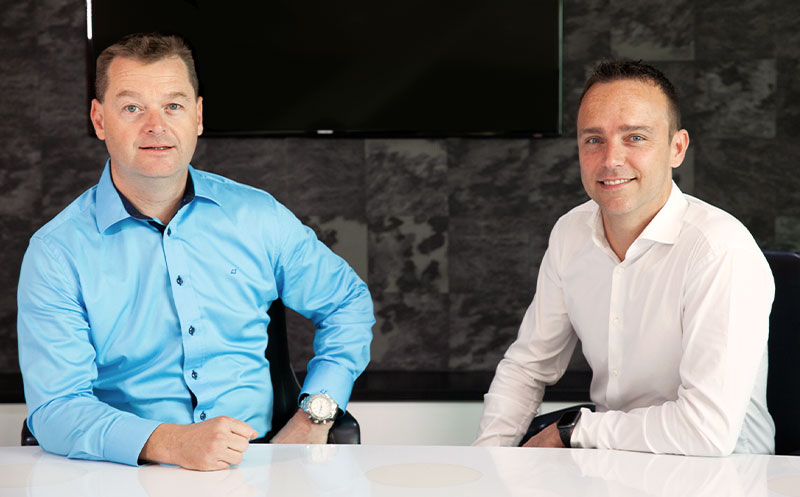
Ian Mitchell, 6point6’s Director of Architecture, considers the opportunities available to organisations driving towards achieving net-zero in technology.
Finding sustainability gains that are hidden in plain sight
Sustainability is a widely and interchangeably used term. In fact a single definition can be hard to arrive at, but in essence in a technological environment, we argue that sustainability means limiting the environmental impact of the services we deliver and reducing our own contribution to significant environmental problems including climate change. To do this, we need to develop sustainability metrics and evaluate our performance against them.
Digital access continues to proliferate, with both private and public sector services continually increasing their reliance on cloud computing. Provision of services to end users, administration of supply chains and processing of data all require ever greater computing power as well as more end user devices.
Demand for digital services is growing rapidly, with Ofcom reporting that COVID-19 led to the following unprecedented increases in digital service use:
- 22.5m people accessed online healthcare information in March 2020
- 12.6m people used the UK Government’s Covid-19 app in October 2020
- 13.7m people used digital platforms for work or education in March 2021 (up from 5.3m year on year)
In 2021 the UK Government published a ‘Net Zero Strategy’ committing to reduce greenhouse gas emissions to net zero by 2050. This included a commitment to embedding net-zero across government activity, meaning that departments will consider net-zero as part of procurement and commissioning decisions to create a cleaner supply chain. The successful delivery of this strategy requires all government departments and therefore all suppliers to the government, to play their part.
Energy provision contributes 35% of greenhouse gases and information technology is currently estimated to be responsible for approximately 10% of commercial energy. In addition, the manufacture, delivery, operation, disposal or recycling of IT equipment has a major role to play in the successful attainment of net-zero. When considering information technology’s environmental impact, it is common for people to leap straight to the emissions volume of cloud data centres where the numbers seem most significant. The data centres and data transmission networks that underpin digitalisation accounted for around 300 Mt CO2-eq in 2020, equivalent to 0.9% of energy-related GHG emissions (or 0.6% of total GHG emissions).
However, to look at only one part of a system is to potentially overlook the effect of other parts. For example, if you focus on data centres with significant carbon emissions driven by servers, cooling, water, waste and electricity usage, you might overlook the positive effect they have had in reducing emissions by enabling more energy efficient, less resource hungry end user devices. Before we get too excited about the apparent win resulting from the move to centralised computing power however, we should note that end user devices are forecast to proliferate at a rate of 12.8% CAGR per year and global enterprise technology accounts for approximately 1-2% of global greenhouse gas emissions – which is roughly equivalent to the entire carbon output of the UK, or 50% of aviation emissions.
We also need to remember that technology can be a force for good. Whilst the rapid growth in use of platforms such as Microsoft Teams contributes to growth in greenhouse gas emissions from technology, it also takes a significant number of vehicles off of the road, reduces the need for unnecessary air travel and reduces consumption of office stationery and other consumables.
How do we find sustainability solutions to something so complex?
1. Understand
Understanding the full extent of your environmental impact can appear complex but it doesn’t need to be difficult. There are frameworks that will help you to understand the information you need by laying out all the targets which exist. For example, UK Government has laid out rules for sustainability relating to net zero, recycling and landfill, as well as transparency and accountability. They’ve also laid out clear targets and outcomes which provide some strategic direction.
Consider your sustainability impact across four key impact areas:
- Sourcing – Think about who and from where you’re procuring products and services. Understand your supply chain and its commitment to strategic imperatives that are important to you – and the planet.
- Deployment – What are you purchasing? What’s driving your designs and your approach to operation? Are you thinking about the most sustainable designs, or the cheapest solution?
- Management – What refresh cycles do you have in place? How do you incentivise people to take care of their hardware? What support and guidance do you give people on paperless operation and care for consumables?
- Recycling and disposal – What targets are you setting for recycling? What accreditations do your reverse supply chain partners have in place? How committed are they to supporting your goals?
2. Engage
Sustainability is a planet-wide imperative and that makes it an organisation-wide issue. This means that technology sustainability does not sit with IT alone. Everyone has a role to play, and this starts in the boardroom. Leaders need to be reviewing performance on sustainability at a strategic level and communicating their progress to the whole business.
This can be as simple as:
- tracking and reporting on paper usage or printer clicks
- reminding people to power devices down when not in use
- promoting good housekeeping around data storage
- displaying sustainability targets where they are easily seen by everyone in the organisation
- nominating a board level owner for organisational leadership on sustainable practice
3. Plan
With engagement from your leadership and clarity relating to your current position you can plan for successfully achieving your sustainability goals. Every organisation is different, and every journey will have a different start point, but your plan will almost certainly need to consider the impact areas documented previously.
Your plan should not only consider what you do and how you do it, but also why you do it. For example, in the case of data storage do not only consider what data you hold, but how long you hold it for, where you hold it, and for what purpose?
Think about where you build and host applications, and whether you could share existing architecture and environments. Once you start to review options and make decisions from a sustainability perspective, you may well find yourself arriving at different answers and proposing different approaches.
Finally, don’t forget refresh cycles and reliability of infrastructure. You may architect differently to enhance resilience, that in turn provides confidence for longer refresh cycles.
Once you have started to take these things into account, you can move towards setting objective targets for your organisation.
Where do I start?
Sustainability permeates every area of an organisation and requires skilled and experienced people working alongside senior leaders to help guide balanced decision making when considering it against other imperatives.
6point6 is experienced in helping organisations understand their current environmental footprint and building plans for improved sustainability impact. If you’d like to know more, contact us at: enquiries@6point6.co.uk.

Ian Mitchell, Director of Architecture
Ian leads 6point6’s architecture practice and technical offerings. With over 30 years’ experience in the IT Industry, Ian specialises in driving the development of large scale enterprise architectures, IT strategies, transformation roadmaps and running Technical Design Authorities.








